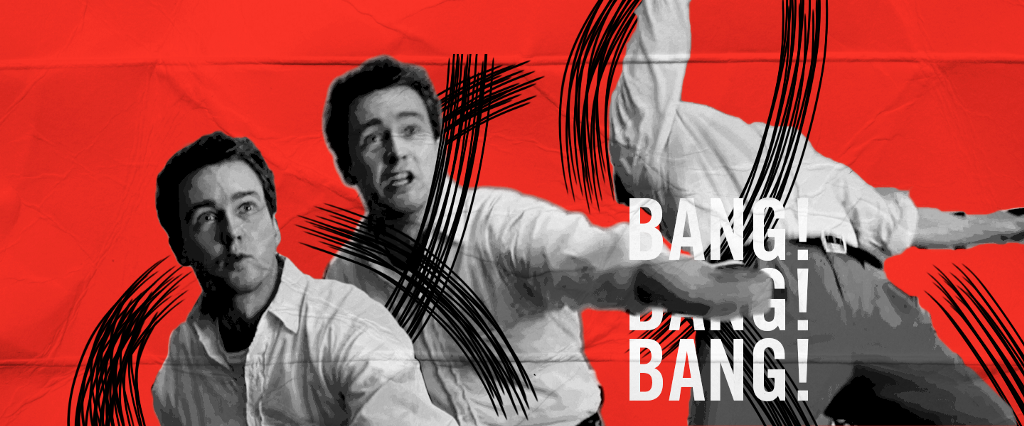All that racket you heard in Fight Club — most especially the punishing fists that bloodied (if not outright destroyed) the pretty faces of Pitt, Leto and Norton — came from Ren Klyce, the five-time Oscar nominee for Best Sound Mixing and Best Sound Editing. In addition to his work on The Last Jedi, Inside Out and House of Cards, Klyce been at David Fincher’s side since they were 19. And so, his credits include all of Fincher’s films, too — from Se7en to The Social Network to Gone Girl (and everything inbetween).
His most indelible noise, though, might be the hand-to-hand clamor he crafted for Fight Club, the film based on Chuck Palahniuk’s 1996 novel of the same name. It was painfully realistic, fearsome and impossible to shake — even nearly 20 years since the film was first released. To hear how he attacked our ears with such ferocity, we asked Klyce to break down the sound production of three of the movie’s most famous fights — when Brad Pitt and Edward Norton first square off; when Jared Leto is completely pulverized via fisticuffs; and when Norton beats the shit out of himself (and his office).
Be forewarned: No chicken carcasses or walnuts were spared in the process.
Pitt v. Norton I
“The first fight scene in Fight Club is meant to be innocent-sounding,” explains Klyce. “Because they don’t know how to fight yet. Ed Norton’s character is a wimpy guy who has never punched anyone in his life. So when he hits Brad Pitt’s character in the ear for the first time, it’s no big deal and meant to sound as natural as possible. We mostly made it from punching stuff ourselves, layered in with what the production microphone captured while we were shooting — e.g., the little scuffling sound Brad’s collar made when he gets punched. Technically it’s wrong because you’re not supposed to hear the microphone moving, but we liked the way it sounded.”
Leto v. Everyone
“For the Angel Face fight when Jared Leto gets his face pulverized, we went to the grocery store and bought big roasts and chickens,” says Klyce. “I stuffed the chicken carcasses with walnuts and put them in an actual basement because it had a natural echo and would sound extra yucky. I’ll never forget the sound it made when we hit them. We even had to wait a beat between each punch so as not to step on the echo from the previous punch. By the time we were done, the basement was a huge bloody mess. There was meat everywhere.”
“Overall, there’s a tendency to think,” Klyce continues, “I’ll just hit three times and that will be enough. Or: Four times — that’ll be enough! But once you’ve gotten all the props, set up the microphones, got your levels figured out, it doesn’t make sense to just do it for 10 seconds. You might as well do it for 10 minutes. Then you might as well change the mic position and do it for another 10 minutes. Because at the end of the day, when you go through it, you might only be able to use 10 to 15 percent — and maybe even less — of those recordings.”
Norton v. Norton
“The sound for the famous scene where Ed punches himself in the face is purposefully very dry,” explains Klyce. “It was in a carpeted room so we dulled out the sound and added low-end frequency bass to punch it up just a little bit. There was a lot of glass in that sequence as well, since after Ed punches himself he falls back on a glass coffee table. The sound of him rolling around on all those broken bits of glass came from little rocks.
“Then David did this really interesting thing: When Ed falls down and there’s an overhead shot of him on the coffee table, his shirt has these horrible yellow armpit stains. All of it — the glass, the pit stains and blood — added up to this incredible, hysterical visceral response from the audience.”
—As told to Craig MacNeil

